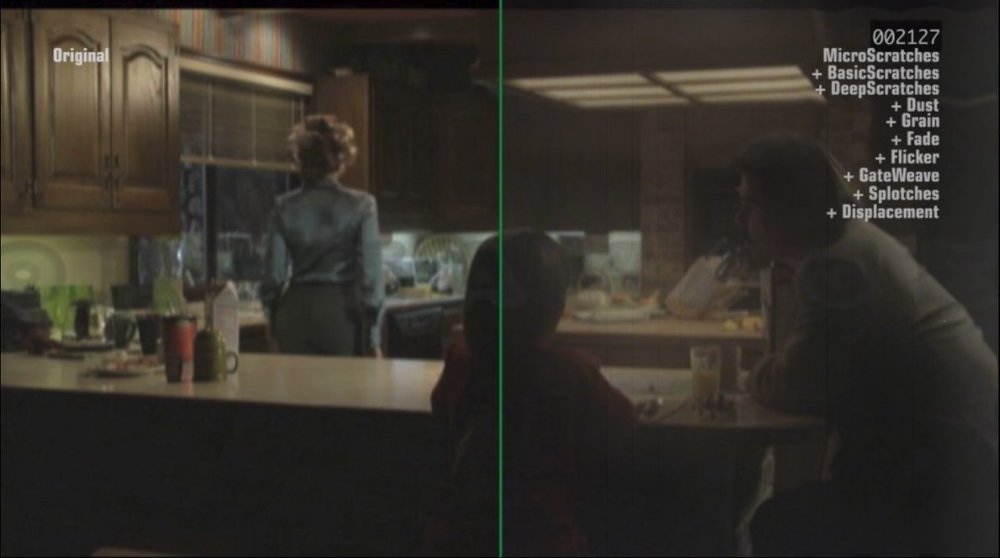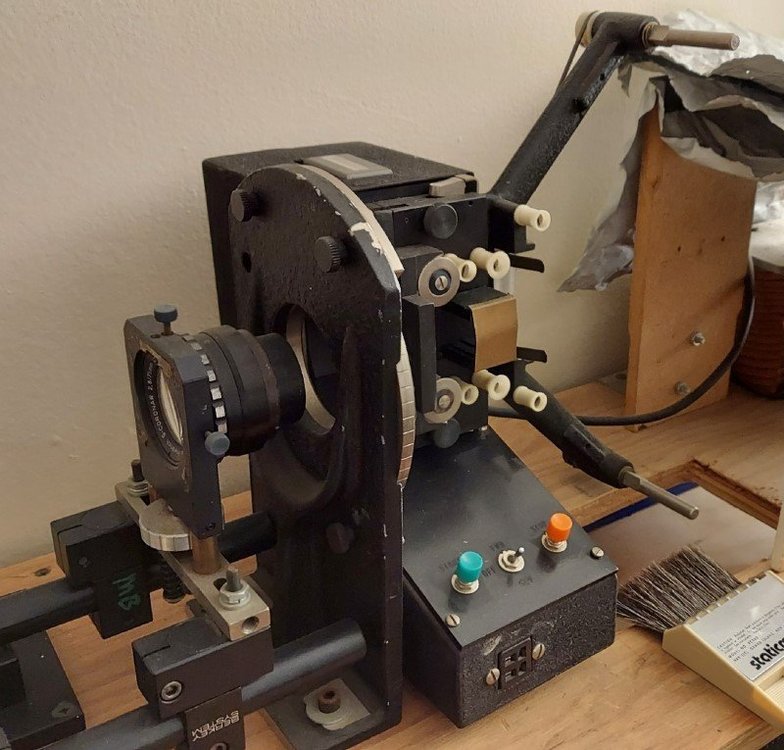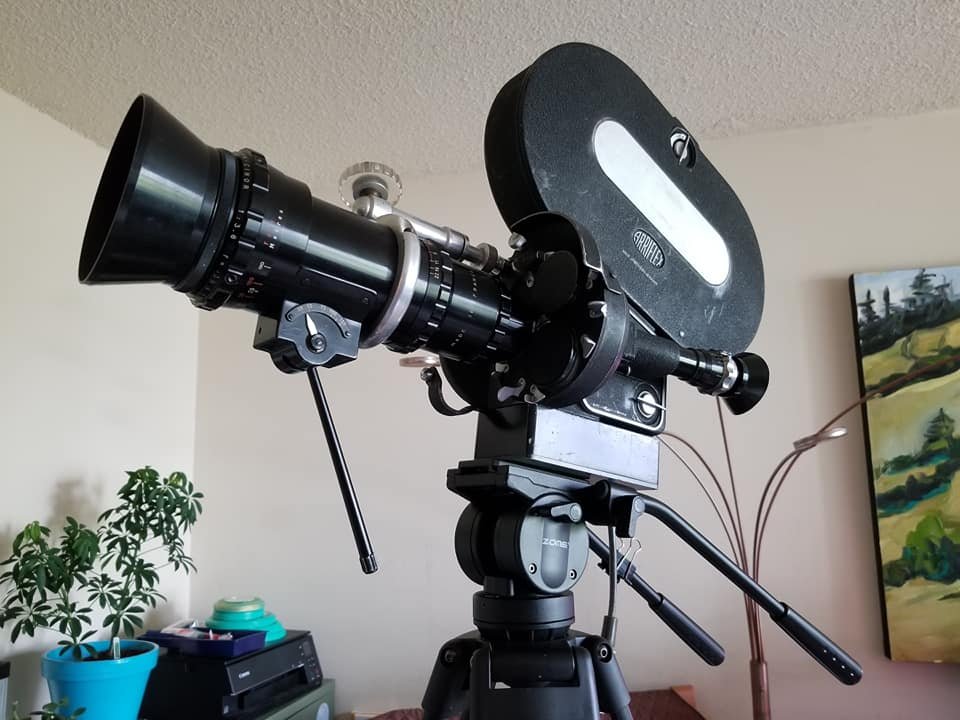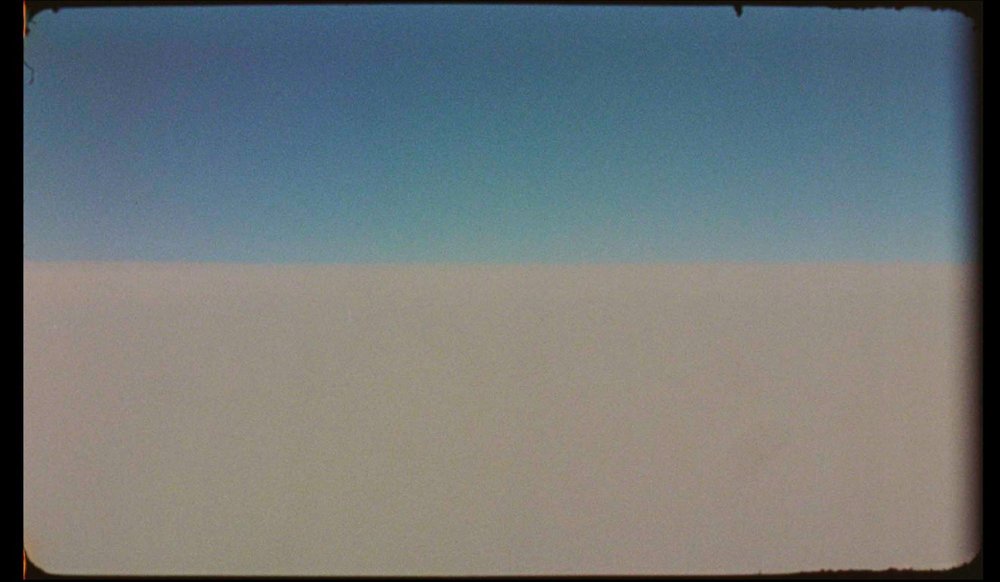-
Posts
231 -
Joined
-
Last visited
Everything posted by Webster Colcord
-

Planet Terror by Rodriguez
Webster Colcord replied to Patrick Cooper's topic in On Screen / Reviews & Observations
@Patrick Cooper Yes, we screened the trailer reel I provided then had it scanned. I actually physically scratched a bunch of the black leader at the tail of the roll, about 20 feet of it, and that was comped in for some shots. The film damage is sort of a character in Planet Terror, it increases or decreases depending on the action. In a lot of the more outlandish makeup fx shots, there's a lot more of it. -

Planet Terror by Rodriguez
Webster Colcord replied to Patrick Cooper's topic in On Screen / Reviews & Observations
35mm trailer reel with tail end scratches, scanned as reference for Planet Terror film damage (no audio) Breakdown of film damage using After Effects plugin "Misfire" -

Planet Terror by Rodriguez
Webster Colcord replied to Patrick Cooper's topic in On Screen / Reviews & Observations
I just looked thru my archives, and I have a ton of stuff from Grindhouse... I'll try to find time to post some stuff to Vimeo and share the links here. Here's an example of the film damage wedges that our comp department would do - progressively adding more elements, with the original footage on the left side of frame. -

Planet Terror by Rodriguez
Webster Colcord replied to Patrick Cooper's topic in On Screen / Reviews & Observations
I worked on the VFX at a company called The Orphanage in San Fran. It was shot digitally, as Robert Rodriguez was one of the first adopters of shooting all-digital. The film look and scratches were added in post. I provided a reel of 35mm from my collection, old exploitation trailers that had gone slightly red. That was scanned and I intentionally scratched about 20 feet of it and it was used in comp. We animated a bunch of elements for shots - missiles, the tow truck flip, helicopters, Quentin Tarantino's melting penis (yes you read that correctly). We also did a bit of work on Quentin Tarantino's companion film, Bullet Proof. I believe that was shot on 35mm. All we did was to replace the underside of the stunt car in the crash scene (to hide some FX rigging) and a few wire removal shots during the car chase. -
Hi Joel, I'm thinking about saying good-bye to my JK 16mm printer head. Not sure what the model # it is. It's currently on a wooden base (I don't have the lathebed-style rails and was just using it as a single-frame projector for multi-pass VFX work.
-
Margaret, I put my 2B up on some cheap Chinese-made sticks and it holds up fine. Very light and portable. I would not leave it unattended because you're definitely in the danger zone on the amount of weight, but if you're standing next to it anyway and you need to get in and out of the location all on your own body, this works. My Cinema Products flat base makes everything easier. You just have to be sure to keep track of any loose gears when you install it, and make sure that the belt in the base is not worn out. - Webster
-
Boris, You got a nice package there. I'm a little jealous of your BNCR mount! Good Arri standard-mount lenses are a bit difficult to find and they're not cheap. I just picked up this old Pan Cinor 38-155 and got it cleaned up by Simon Wyss. Really looking forward to shooting with it. The flat base is a Cinema Products sync motor, which runs off a 16.8V battery belt.
-
I wonder if the first photo below could be of the setup in question? Also, in watching the behind-the-scenes footage it seems like their camera gear is relatively spartan. They use this little crane/dolly combo for everything. Can anyone tell me please what kind of little crane this is?
-

70HR/KRM info, instruction manual, tips
Webster Colcord replied to Philip Forrest's topic in Bell + Howell
Don, I have a motor/Filmo combo with the exact same issue. Something in that clutch/shaft area isn't working. -
The legendary and humble Jaakko Kurhi happens to live about 45 minutes drive from me. I have taken him a couple of Bolex' for maintenance, and one of his old Animation Controllers for repair, but recently he told me that he is officially retired. He leaves his site up "for informational purposes" as he says. He let me take this photo of him in 2018 when I brought in a camera. At the time he was working on an optical printer using some of his remaining parts stock: Google photo link So sadly, that's one less bonafied Bolex expert available to the world.
-

400 ft Bolex Mag... super 16 compliant
Webster Colcord replied to Arthur Sanchez's topic in Cine Marketplace
Oh shit. I didn't know something had to be done. Oops. -

WTB Kern Switar 10mm f/1.6 RX Lens
Webster Colcord replied to Jordan Beard's topic in Cine Marketplace
@Steve Dunn I may have been shooting my example with the 10mm non-preset version, I'm not sure. I have one of each. If so, according to the info above about the difference in the two versions of the lens, that might explain why I have more vignetting in my footage. -

WTB Kern Switar 10mm f/1.6 RX Lens
Webster Colcord replied to Jordan Beard's topic in Cine Marketplace
It does cover Super 16, but like Volker said, there's a little bit of vignetting at the corners. This was an impromptu piece that I shot using a Switar 10mm (the preset version, if I recall) and a Switar 25mm. FYI, the levers tend to get broken off from the preset Switar 10mm : -
Here's a couple amateurish Ultra-16 examples from myself, shot with a cheap Revere springwind camera with a widened gate. The first example is cropped and heavily stabilized: The example below is uncropped. Unfortunately when machining out the gate, a tiny burr was created and it's scratching off a bit of emulsion, which is building up in the gate. You can see edgecode between the perfs on screen left.
-
Thanks for the link Simon! It reminds me of the Auricon gate with its bearings that help stabilize the film. I'm still dubious about the steadiness of the CKS, though, as the films that I have been getting scanned are mostly 2R and I see registration issues. Do you think it's odd that the film is sandwiched against itself as it passes thru the single sprocket on both the feed and the takeup side? Also, Simon, do you have any experience with the Eumig C16R? It seems to have the same problem as the Beaulieu R16 & Filmo, in terms of the miniscule base for mounting. I haven't worked with one though, I'm curious. Sad that it's a proprietary lens mount.
-
Fabrice, I'm loving this topic and I'm so glad you started it, and made a good case for the Webo, a camera which I have long been curious about. I have dabbled with shooting through an anamorphic lens, but didn't want to spend a lot of money. So I picked up this giant inexpensive projection lens and rigged up the Bolex on a cheese plate, with rails and a big mount for the front lens. It works okay and I have even handheld this rig! This is just to show that anything is possible with the right rigging components. You also mentioned the Kodak Cine Special. I have been scanning film shot with a Cine Special from an old filmmaker friend and am finding lots of unstable footage. Recently I verified with someone else, that with their Cine Special system some magazines were more reliable than others - the claw mechanism is part of the magazine and it doesn't seem to be very well made.
-

Stunning new campaign from Comme Des Garcons
Webster Colcord replied to Ralph Poes's topic in Visual Effects Cinematography
Some cool tricks in there. The first macro shot where the hand grabs the bottle, and one later close-up has a lot of chromatic aberration - I have an old Pan Cinor that does the same. Also I think there's many shots where the camera is shooting into mylar that's being wiggled? Maybe one shot with vaseline around the edge of the lens, or a hole cut in a plastic bottle? -
Sorry for the lengthy topic wording. I didn't want to call it "Camera Movements" as that would be mistaken for something else. I'm sure this has all been covered in the forum previously, but perhaps not under one topic thread (I searched). From what I have learned over the years, there are four basic types of camera movements (film transport mechanisms) in professional cameras with many variations: 1. pull-down claw - usually driven by a cam, variations include the Bolex' "trailing claw" and the Auricon's claw with bearings in the gate which have a stabilizing function. 2. claw with pins mechanically linked - does this have a better name? I'm thinking of the "Mitchell-type" mechanically linked pull-down claw with registration pins. In the J.M. Wall camera this was designed to all fit in a compact module that could be taken out of the camera easily, the Arri BL had a similar design. The Arri-S and Milliken come to mind as other variations with a mechanically linked registration pin. 3. fixed pin shuttle - used in the Bell & Howell 2709 and animation cameras, also used in optical printers 4. prism & drum - specifically for highspeed cameras - please correct me/mansplain-away!
-
I just got my inaugural test roll back for a Gic 16 - and my first time shooting the new Ektachrome. Lots of problems, and have since sent off the camera to Mr. Wyss for repair. The take-up was inconsistent, so every 5 feet it would back up and (since there's so little room in there) jam. So I had my changing bag with me and would pop the camera into it after each 5 ft, and manually adjust the take-up. Unfortunately, it turns out that this changing bag was not 100% light-tight! It was also an extremely bright day, so I'm not too surprised. E100D, processing by Dwayne's, 2K scan by Nick Coyle. Lens was an Angenieux 17-68 with side finder. Camera's speed is supposed to be 16fps but I have adjusted the speed in the edit to 15fps and it feels correct. It's really just a novelty camera, cheaply made but fun and *tiny*.
-

Super 16 Bolex conversion
Webster Colcord replied to Arthur Sanchez's topic in Camera Operating & Gear
Arthur, I really love the "Omni 16" option that you show on your site. I'm wondering - is it the same price as your Super 16 conversion and does it involve re-centering the lens just like the Super 16 conversion does? - Webster











